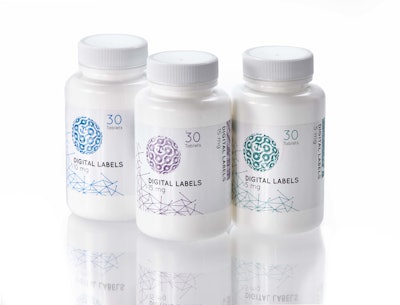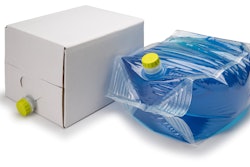Everyone knows that protecting your brand stretches across all areas of a company.
Brand protection includes issues like serialization, anti-counterfeiting and anti-diversion. And, it's not just your company that you have to worry about. It's critical to have a good relationship with your business partners.
Tackling the brand protection worry, and the other issues that come along with them has further strengthened the bond between packaging converter Nosco and its label supplier Avery Dennison.
The two companies have worked together for decades now, estimates Craig Curran, Nosco’s Vice President of Sales & Marketing.
“We’ve been great partners in the pharmaceutical business,” he says. “And, it’s been expanding in recent years into a broader healthcare packaging relationship.”
Kregg Albrecht, Nosco’s Vice President of Solutions Engineering, explains, “Brand protection is a broad area that involves anti-diversion, anti-counterfeiting and anti-tampering. We see serialization as primarily an anti-diversion effort.”
Albrecht describes diversion as legitimate product entering illegitimate channels.
“In this case, the drug may not actually be counterfeit, but it's sold in a market for which it's not intended. So diversion is typically a geographic issue where a product might be selling in a country where it's not authorized.”
Authentication technologies, he says, help address where the drug product or its package “have been outright counterfeited. When I say authenticating technology, these include taggants and other technologies that are difficult or nearly impossibly to duplicate by a counterfeiter, perhaps hidden so that they won't be seen.”
Such covert technologies can work in tandem with overt anti-counterfeiting efforts that are easily seen but ideally difficult to duplicate or mimic.
Working on pharmaceutical security and brand production issues represent “the true partnership between Avery Dennison and Nosco,” says Alison Schuitema, Avery Dennison Product Manager, Pharmaceuticals—Materials Group North America. She says that’s because “many security and brand protection solutions are a combination of features within facestocks and the adhesives, along with print technology and varnishes that go on top. It's a cool partnership, the way we can work together for brand protection. It's always changing.”
Constant change is necessary to keep a step ahead of counterfeiters, says Albrecht.
“It's important to rotate the technologies. It might be as simple as a hidden feature that reflects a certain wavelength or a certain color, and then over time you might change that to a different wavelength or a different color output. If you pre-plan that out in advance, it helps with the selection of technologies.”
Global and material issues
Part of the challenge, says Curran, is accommodating different global serialization initiatives and the timing for Avery Dennison/Nosco customers to roll out serialized products in different countries.
Another challenge: Making sure that packaging materials from both suppliers meet migration or temperature-sensitivity needs.
“Sensitive drugs require clean, low-migration packaging,” says Albrecht. “Those are typically packaged in plastic, which is permeable. Chemistries in inks, adhesives, coatings, etcetera, can migrate through the walls of a plastic container and impact the product.”
Albrecht explains, “The sensitive areas are related to the route of administration: Direct injection, inhalants or ophthalmic eye drops, products that immediately go into the human bloodstream from plastic primary containers. For glass, it's typically not a major issue because for all intents and purposes is impervious.”
Curran says ophthalmics and nasal inhalants require excellent adhesive systems from Avery Dennison that won't leech into products.
“If they do, they can impact an ophthalmic solution and cause an infection in an eye. It really takes the partnership between Avery Dennison and Nosco's engineering team, as well as the end-user customer all working together to come up with a total system of the components of the package to make sure they won't leech or migrate into the product.”
For syringes, typically small-diameter tubes, Curran notes, “You have to have a very good combination of the adhesive and the facestock. The label must to adhere to the glass or plastic and to be able to withstand lifting up because it's wrapped on such a tight diameter.
“It's a combination of a well-balanced adhesive and the right pressure-sensitive label stock,” he continues. “It's typically clear so you can view the drug product through the syringe. We often use BOPP [biaxially oriented polypropylene] materials.
“From the printing side, we're often printing the demarcations for the dosage levels. It requires extreme precision with registration, not only for Nosco’s printing and die-cutting processes, but it also carries through to the application of the label to the syringe barrel,” during the customer’s production run.
Prefilled syringe trend impact
Another important area in which Avery Dennison and Nosco partner is in prefilled syringes, often due to breakage and consumer convenience issues.
Prefilled syringes, ampules and vials represent a trend, says Curran. “It’s at the unit-dose level and they're very small-diameter applications. These are becoming more geared toward patient-centric packaging for use in home healthcare, ease of use and ease of administration. That's why we're starting to see more of these auto-injectors as well.
“That trend,” he says, “has created another challenge in labeling: Now we're labeling the outer barrel of the auto-injector, so we need to adhere to something other than glass typically. There are all types of different plastics used in this arena. Not only do we have to meet the performance properties of the adhesive and the material bonding permanently to the structure, but they're often multi-layer labels that you either have to peel back and read some copy underneath, or there are multiple pages of copy for instructions and/or pictograms, aimed at the patients who self-administer the product.”
For these applications, Avery Dennison supplies Nosco with the adhesives and labels that wrap around narrow circumferences, without popping off or lifting from the labels.
Booklet labels
Booklet labels, or multi-panel labels, are also growing rapidly in their marketplace because of the need for more information. Again, Nosco works frequently with base labels from Avery Dennison.
Albrecht says structures for these types of labels usually include a base pressure-sensitive label with a top clear laminate that seals the booklet information to the base label, as well as providing an opening feature to open and reseal the label multiple times.
Additional space for patient information and regulatory copy is also part of the complexity with these labels, as are multiple language requirements.
Factoring in sustainability
Sustainability is a growing factor in materials decisions. Says Curran, “With natural health products it's really important to use recycled materials, or kraft-based materials that offer a natural look and feel that communicates sustainability and environmental friendliness. I think Avery Dennison has a done a good job of putting together a portfolio of those types of materials that can be used.
“In fact, Nosco just produced what we call our 'decorative kit.' It includes some of those sample types of materials for the natural health market, which could include vitamins, minerals, sports nutrition or dietary supplements, for example.”
The two partners also work in the personal care market, where materials must deliver a decorative effect. This could include bright white film that can accommodate screen printing, hot stamping or special effects, including metallized structures to enhance shelf presence.
“They're all in the healthcare space, but they all have different needs,” asserts Curran. “Whether you're in pharmaceuticals, natural health or personal care, you have different needs, and you're trying to do something different on the shelves.”
Biologics and the ‘cold chain’
Albrecht acknowledges that the biologics market is accelerating, with many of the products tending to be injectables within a syringe, ampule or vial. Often, these are high-value treatments that interest would-be counterfeiters. “We see a greater level of adoption of security or brand protection features here,” he says.
Temperature-sensitive products stress label materials and adhesives as well. In fact, some of these materials must withstand cryogenic storage and distribution.
Avery Dennison’s Schuitema explains, “We have a portfolio of products to fit the specific needs for cold temperature applications, ranging from refrigerated, frozen, and even dry ice temperatures and cryogenics. There is a lot of adhesive chemistry development and science that goes into that. It's a growing field right now, so we're seeing more need for different and demanding temperature applications, and we expect greater demands as we go forward.”






















